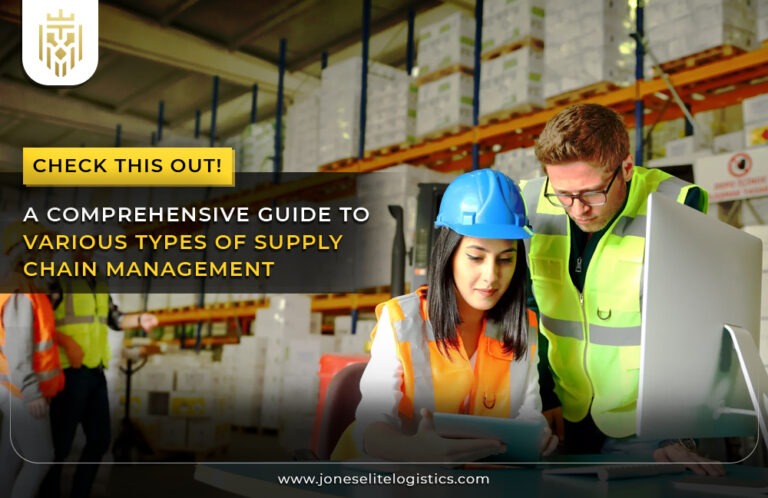What is Intermodal Transportation?
Intermodal Transportation moves goods using multiple transport modes, such as trucks, rail, and ships, while keeping cargo in standardized containers. This system, credited to the U.S. military in the 1950s for pioneering containerization, enhances speed, minimizes handling, and reduces costs, as the Department of Defense’s standards were later adopted by the ISO. Intermodal Transportation means achieving efficiency by securely transferring containers across modes without unloading cargo, ensuring seamless transitions from origin to final destination.
How does Intermodal Transportation work?
In intermodal freight transport, goods arrive at ports in containers and move to rail yards for long-haul journeys. Afterwards, they are transferred onto trucks for final delivery, creating a seamless intermodal transportation process. This setup enables businesses to leverage each mode’s efficiency, optimizing intermodal transportation for secure and cost-effective delivery from start to finish.

Characteristics of Intermodal Transportation:
Intermodal Transportation uses standardized containers across multiple transport modes, allowing for smooth transfers, centralized cargo management, and streamlined customs. This multi-modal approach makes intermodal freight transport secure, cost-effective, and eco-friendly by combining rail, road, and ship, leveraging each mode’s strengths.
Mode of Transport:
Intermodal transportation combines modes like rail and trucks for end-to-end shipping, maximizing productivity by using rail for long distances and trucks for local deliveries. This integrated approach views the journey as a continuous trip, not as segmented legs, optimizing intermodal freight transport efficiency.
Management Cargo:
In intermodal transportation, centralized cargo management oversees the logistics process across modes, enhancing coordination and tracking. This unified approach in intermodal freight transport ensures accountability and smoother transfers, from origin to final destination.
Simplification of Custom Procedures:
Intermodal Transportation simplifies customs through centralized contracts, reducing wait times at borders, lowering administrative errors, and enhancing efficiency for international trade, making intermodal freight transport more streamlined.
Standardized Containers:
Standardized containers allow intermodal transportation to transition smoothly between modes, saving costs, reducing environmental impact, and ensuring efficient handling across road, rail, sea, and air, making intermodal freight transport more efficient.
What are the types of Intermodal Transportation?
Types of intermodal transportation include truck-rail for flexible delivery and long-haul rail, rail-ship for overseas shipments, and truck-air for fast air transport paired with local trucking. These options allow intermodal freight transport to meet varied shipping needs.

Truck Rail:
Truck-rail intermodal transportation involves moving cargo by truck to a terminal, where it’s transferred to rail for long-distance travel. At the destination, cargo moves back onto trucks, creating an efficient, multi-modal shipping solution.
Rail Ship:
In rail-ship intermodal transportation, trains move containers to ports where they load onto ships for overseas transit. Upon reaching the destination port, containers are transferred to trains or trucks, enhancing intermodal freight transport flexibility.
Truck Air:
Truck-air intermodal transportation starts with goods transported by truck to an airport. They’re then flown to distant locations, where trucks handle local distribution, making intermodal freight transport swift and adaptable for varied delivery distances.
Advantages of Intermodal Transportation:
The advantages of intermodal transportation include flexibility, sustainability, and reduced traffic. This setup combines transport modes to cut costs, lower emissions, and simplify cargo transfers, making intermodal freight transport efficient and eco-friendly for long and short distances alike.

Flexible:
Intermodal transportation offers shippers flexibility with mode combinations, allowing changes in routes or carrier choices to save costs. By contracting specialized carriers, intermodal freight transport adapts efficiently to schedule changes and specific needs.
Quality and Safe Service:
With intermodal transportation, secure handling using standardized containers protects shipments, reducing damage and maintaining reliability in intermodal freight transport by minimizing unnecessary handling during transitions.
Sustainability:
Intermodal transportation supports sustainability by using eco-friendly modes like rail, leveraging larger vehicles, and reducing truck dependency to cut fuel use and emissions, enhancing intermodal freight transport’s environmental benefits.
Reduced Traffic:
Intermodal transportation eases highway congestion by combining trains and ships with trucks, reducing road traffic and optimizing intermodal freight transport across long distances for more efficient and environmentally conscious shipping.
FAQs
-
What is Intermodal Transportation?
Intermodal transportation moves goods across multiple modes (e.g., trucks, rail, ships) using standardized containers, minimizing handling, reducing costs, and improving efficiency as containers stay sealed throughout, from origin to destination.
-
How does Intermodal Transportation work?
In intermodal transportation, cargo arrives at a port, moves by rail for long-haul transport, and shifts to trucks for final delivery, creating a streamlined, multi-modal process from origin to end-point.
-
What are the types of Intermodal Transportation?
Types of intermodal transportation include truck-rail, rail-ship, and truck-air, each catering to specific distance, speed, and cost needs, allowing flexibility in transit planning for efficient, secure deliveries.
-
What are the most common Intermodal Transportation?
The most common intermodal methods are truck-rail and rail-ship, providing cost-effective, long-distance options that integrate efficiently with local truck routes for flexible and economical cargo transport.







